Ashkan Parsi
Non-Contact NIR PPG Sensing through Large Sequence Signal Regression
Nov 20, 2023Abstract:Non-Contact sensing is an emerging technology with applications across many industries from driver monitoring in vehicles to patient monitoring in healthcare. Current state-of-the-art implementations focus on RGB video, but this struggles in varying/noisy light conditions and is almost completely unfeasible in the dark. Near Infra-Red (NIR) video, however, does not suffer from these constraints. This paper aims to demonstrate the effectiveness of an alternative Convolution Attention Network (CAN) architecture, to regress photoplethysmography (PPG) signal from a sequence of NIR frames. A combination of two publicly available datasets, which is split into train and test sets, is used for training the CAN. This combined dataset is augmented to reduce overfitting to the 'normal' 60 - 80 bpm heart rate range by providing the full range of heart rates along with corresponding videos for each subject. This CAN, when implemented over video cropped to the subject's head, achieved a Mean Average Error (MAE) of just 0.99 bpm, proving its effectiveness on NIR video and the architecture's feasibility to regress an accurate signal output.
* 4 pages, 3 figures, 3 tables, Irish Machine Vision and Image Processing Conference 2023
Non-Contact Breathing Rate Detection Using Optical Flow
Nov 13, 2023

Abstract:Breathing rate is a vital health metric that is an invaluable indicator of the overall health of a person. In recent years, the non-contact measurement of health signals such as breathing rate has been a huge area of development, with a wide range of applications from telemedicine to driver monitoring systems. This paper presents an investigation into a method of non-contact breathing rate detection using a motion detection algorithm, optical flow. Optical flow is used to successfully measure breathing rate by tracking the motion of specific points on the body. In this study, the success of optical flow when using different sets of points is evaluated. Testing shows that both chest and facial movement can be used to determine breathing rate but to different degrees of success. The chest generates very accurate signals, with an RMSE of 0.63 on the tested videos. Facial points can also generate reliable signals when there is minimal head movement but are much more vulnerable to noise caused by head/body movements. These findings highlight the potential of optical flow as a non-invasive method for breathing rate detection and emphasize the importance of selecting appropriate points to optimize accuracy.
A Feature Selection Method for Driver Stress Detection Using Heart Rate Variability and Breathing Rate
Feb 03, 2023Abstract:Driver stress is a major cause of car accidents and death worldwide. Furthermore, persistent stress is a health problem, contributing to hypertension and other diseases of the cardiovascular system. Stress has a measurable impact on heart and breathing rates and stress levels can be inferred from such measurements. Galvanic skin response is a common test to measure the perspiration caused by both physiological and psychological stress, as well as extreme emotions. In this paper, galvanic skin response is used to estimate the ground truth stress levels. A feature selection technique based on the minimal redundancy-maximal relevance method is then applied to multiple heart rate variability and breathing rate metrics to identify a novel and optimal combination for use in detecting stress. The support vector machine algorithm with a radial basis function kernel was used along with these features to reliably predict stress. The proposed method has achieved a high level of accuracy on the target dataset.
Improved Cardiac Arrhythmia Prediction Based on Heart Rate Variability Analysis
Jun 07, 2022



Abstract:Many types of ventricular and atrial cardiac arrhythmias have been discovered in clinical practice in the past 100 years, and these arrhythmias are a major contributor to sudden cardiac death. Ventricular tachycardia, ventricular fibrillation, and paroxysmal atrial fibrillation are the most commonly-occurring and dangerous arrhythmias, therefore early detection is crucial to prevent any further complications and reduce fatalities. Implantable devices such as pacemakers are commonly used in patients at high risk of sudden cardiac death. While great advances have been made in medical technology, there remain significant challenges in effective management of common arrhythmias. This thesis proposes novel arrhythmia detection and prediction methods to differentiate cardiac arrhythmias from non-life-threatening cardiac events, to increase the likelihood of detecting events that may lead to mortality, as well as reduce the incidence of unnecessary therapeutic intervention. The methods are based on detailed analysis of Heart Rate Variability (HRV) information. The results of the work show good performance of the proposed methods and support the potential for their deployment in resource-constrained devices for ventricular and atrial arrhythmia prediction, such as implantable pacemakers and defibrillators.
E-Scooter Rider Detection and Classification in Dense Urban Environments
May 20, 2022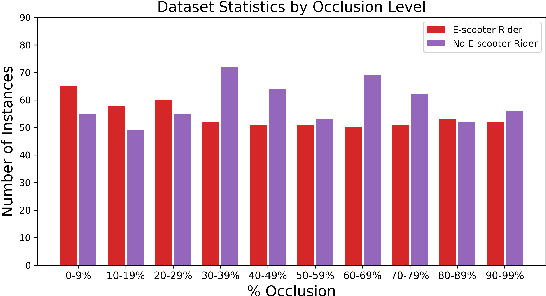
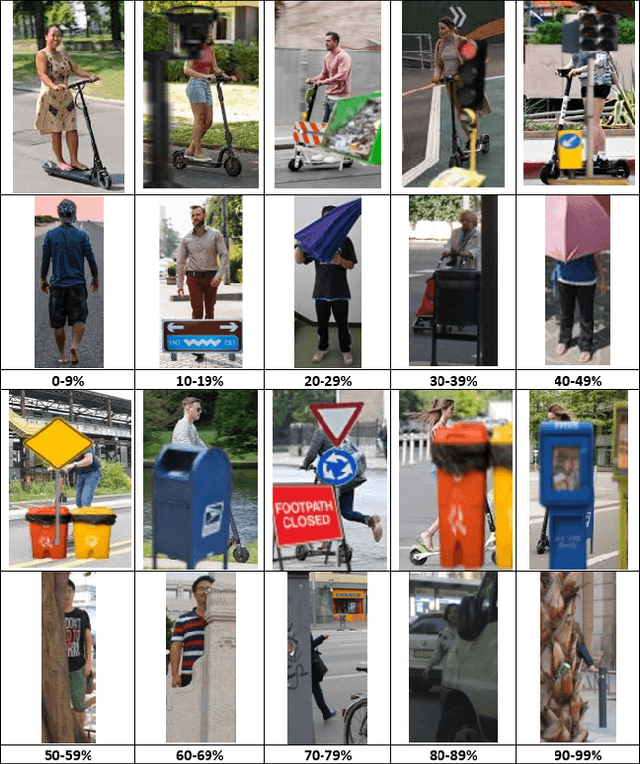
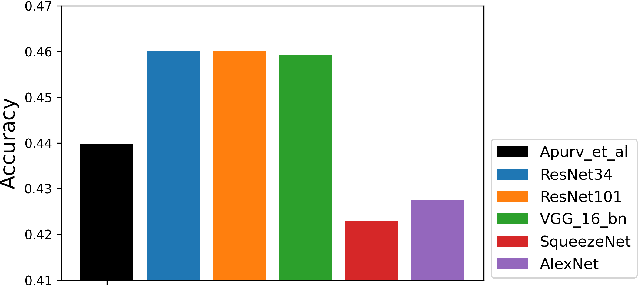
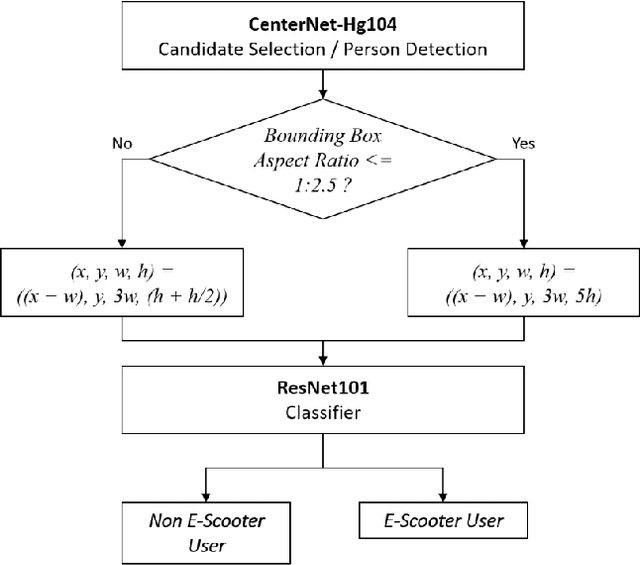
Abstract:Accurate detection and classification of vulnerable road users is a safety critical requirement for the deployment of autonomous vehicles in heterogeneous traffic. Although similar in physical appearance to pedestrians, e-scooter riders follow distinctly different characteristics of movement and can reach speeds of up to 45kmph. The challenge of detecting e-scooter riders is exacerbated in urban environments where the frequency of partial occlusion is increased as riders navigate between vehicles, traffic infrastructure and other road users. This can lead to the non-detection or mis-classification of e-scooter riders as pedestrians, providing inaccurate information for accident mitigation and path planning in autonomous vehicle applications. This research introduces a novel benchmark for partially occluded e-scooter rider detection to facilitate the objective characterization of detection models. A novel, occlusion-aware method of e-scooter rider detection is presented that achieves a 15.93% improvement in detection performance over the current state of the art.
The Impact of Partial Occlusion on Pedestrian Detectability
May 12, 2022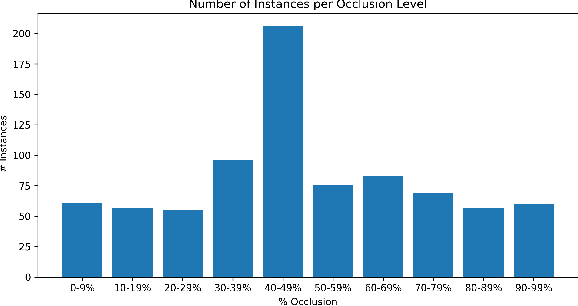
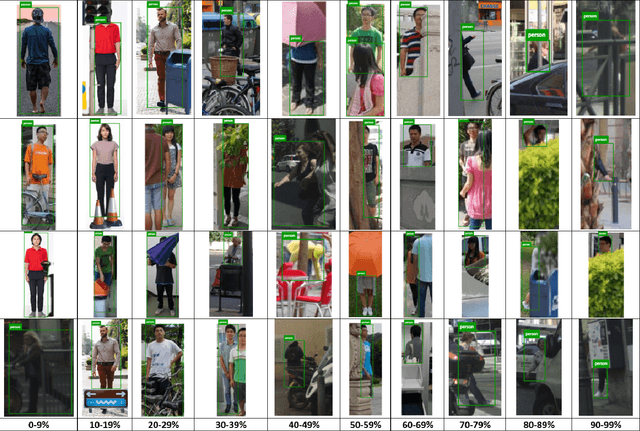
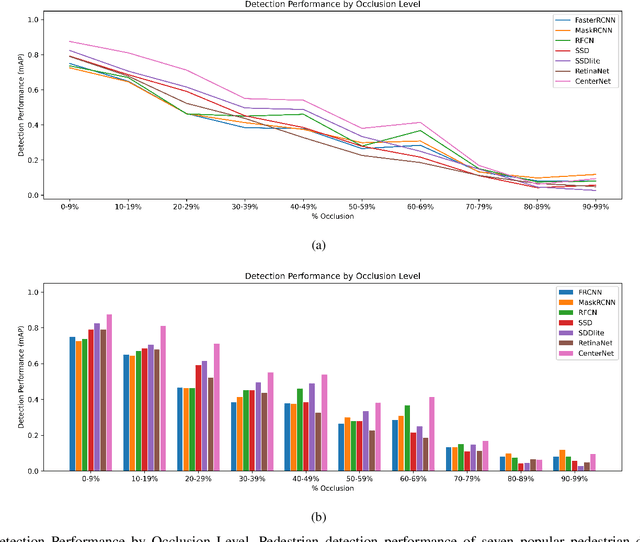
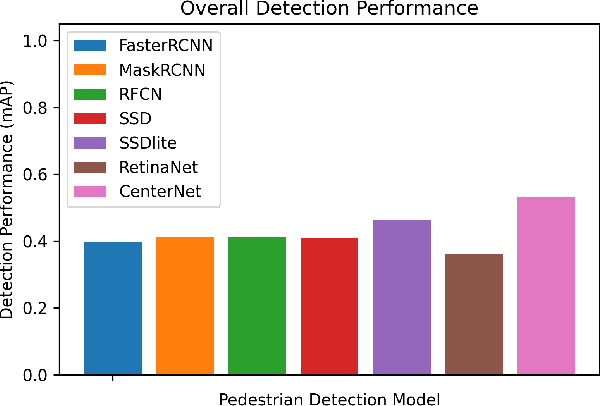
Abstract:Robust detection of vulnerable road users is a safety critical requirement for the deployment of autonomous vehicles in heterogeneous traffic. One of the most complex outstanding challenges is that of partial occlusion where a target object is only partially available to the sensor due to obstruction by another foreground object. A number of leading pedestrian detection benchmarks provide annotation for partial occlusion, however each benchmark varies greatly in their definition of the occurrence and severity of occlusion. Recent research demonstrates that a high degree of subjectivity is used to classify occlusion level in these cases and occlusion is typically categorized into 2 to 3 broad categories such as partially and heavily occluded. This can lead to inaccurate or inconsistent reporting of pedestrian detection model performance depending on which benchmark is used. This research introduces a novel, objective benchmark for partially occluded pedestrian detection to facilitate the objective characterization of pedestrian detection models. Characterization is carried out on seven popular pedestrian detection models for a range of occlusion levels from 0-99%. Results demonstrate that pedestrian detection performance degrades, and the number of false negative detections increase as pedestrian occlusion level increases. Of the seven popular pedestrian detection routines characterized, CenterNet has the greatest overall performance, followed by SSDlite. RetinaNet has the lowest overall detection performance across the range of occlusion levels.
 Add to Chrome
Add to Chrome Add to Firefox
Add to Firefox Add to Edge
Add to Edge